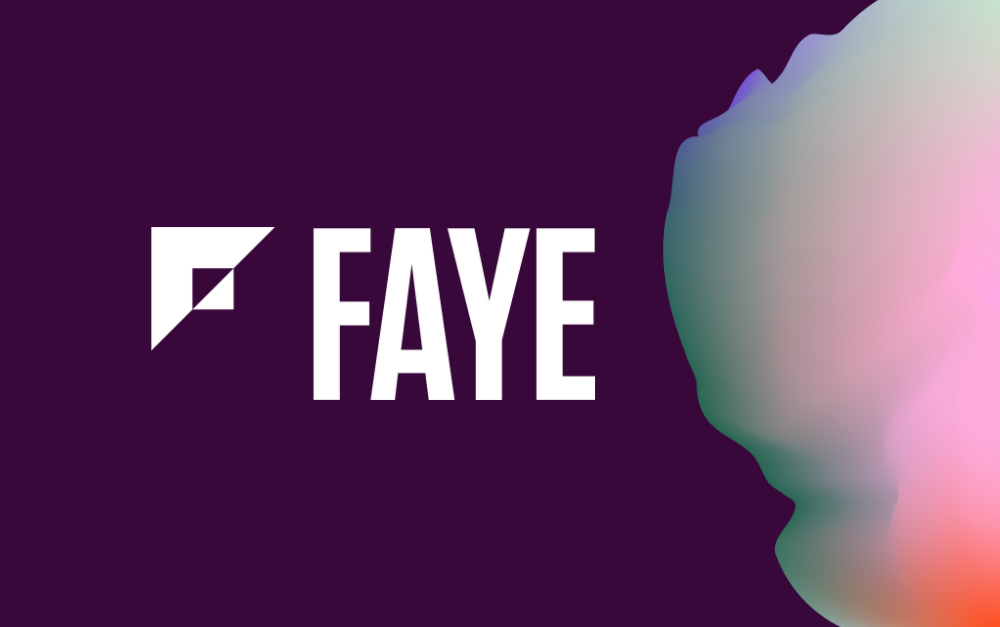
The new year is almost here and the ever-changing landscape of the internet is evolving once again. Similarly, social media is evolving. From new social platforms to changing behaviors, let’s take a look at some of the trends you can expect from social media in the coming year.
Streamline Your Content
The internet is overrun with content. In the past, when content marketing was gaining popularity there was a reasonable amount of content on the internet so you could expect to easily draw large audiences to newly posted content. Views, engagement and conversions were a piece of cake! However, now with content saturation, there are too many options on every single subject and there is just too much for any one person to consume.
So, what’s the solution?
Make less content but make it good. Consumer demand for content remains static while content generation increases year over year. Furthermore, on average only 5% of a company’s branded content is responsible for generating a whopping 90% of that company’s total engagement. So, content is still a powerful tool, we just need to adjust our content strategies.
Audiences are still searching for great content, but instead of just publishing for the sake of keeping up with the Joneses, only publish when you have something valuable to say. Figure out the 5% of your content that your audience is seeking out and make sure that you focus your efforts there.
Create high-quality content pieces on the topic and refresh your existing pieces that are getting high views, engagement or conversions. Update it for accuracy, timeliness and comprehensiveness. Update the title, copy, CTA, links, images and metadata. Take a special look at your evergreen content, which is content that does not lose its value over time. This kind of content is consistently proven to drive large amounts of traffic with minimum effort.
Out With The Old
As everything continues to evolve, your prior strategies may not have the same effect that they used to. Continue to try new strategies and test everything. Experiment with different channels and tactics.
Video Marketing
Video marketing is one of the fastest-growing strategies and as a result, experts think that it will be the dominant marketing tool in the future. It is visual and auditory and some of the only content you can’t fake through automation. 90% of customers claim marketing videos help them with their purchasing decisions and one minute of video is equivalent to 1.8 million words.
Clusters
Clusters are a group of interlinked pages about one topic that centers around one pillar page. The pages are all linked to the pillar page through the same hyperlinked keyword. All it takes is for one of these pages to perform well and the entire cluster’s topic will get a boost. It also boosts similar topics on your website which in turn may lead to your site being ranked well on search engines. Additionally, clusters can be used to find organic gaps in your content. It will map out what you have written about and what topics remain to be tackled.
But this is only half the battle. Once you have the right content, you must then figure out how and where to distribute it.
Social Takeover
Ephemeral Content
This is content that shows up for a short amount of time and then disappears. Platforms like SnapChat and Instagram are popular for this. People have short attention spans which have resulted in the rise in popularity of this type of content. Instagram story daily activity has more than tripled between January 2017 and January 2019. So, don’t get left behind in 2020, 64% of marketers have already adopted ephemeral content into their marketing strategies.
Facebook’s algorithm is based on Commenting, Sharing and Reacting. In the past brands would post ‘bait’ content that encourages customers into engaging but the algorithm has changed to demote these kinds of posts while rewarding genuine interest. Facebook also changed its algorithm to give equal emphasis to both private and public posts. Facebook content needs to be authentic and meaningful to succeed. Keep in mind, however, that reach and referral traffic from Facebook will continue to decrease, so you may want to rethink the investment of your resources in this platform.
Niche Platforms
Niche social media platforms, like TikTok for youths, Linkedin for business professionals and Twitch for the video gaming community will continue to gain popularity in 2020.
There are a lot of changes coming to Instagram in 2020. They are removing likes making things a bit harder for marketers. While Instagram claims that the change is associated with negative personal value, validation and mental health in association with likes, many believe that the change was made to encourage ad buying since brands can no longer measure the direct impact of their campaigns. As a result, you may have to adjust your marketing strategy soon to accommodate more Instagram ads.
Social Commerce
The popularity of social media is at an all-time high and as such consumers do almost everything through those platforms. It’s where they get their news, it’s where they interact with friends and now it’s where they shop. In 2020 commerce through social media will reach an all-time high. While platforms like Instagram, Pinterest and Facebook have pioneered the social commerce space you can look forward to many more social platforms jumping on the bandwagon. Social media is well on its way to becoming a mainstream retail channel.
Customer Service
Another increasing social media trend is customer service. Instead of calling in or sending an email, many customers now take to social media to air their grievances with brands. As a result, you need to provide the same level of customer support that a customer would expect through more traditional channels. Make sure that your social media customer service is up to snuff because you are essentially providing service in a public forum in front of other customers and prospects. The results of which can either encourage new business or avert it.
Social Media Communities
Social media communities have been gaining more and more popularity. They are platforms, like Facebook groups, where customers can come together and share their interest in your brand or product. Brands can utilize these groups to bring like-minded customers together and not only engage with them in a meaningful way but also observe them and figure out what they like and what they don’t.
Influencers and Brand Ambassadors
While Instagram is making staunch changes with its platform this will not stop influencers and brand ambassadors from continuing their upward tick. Customers put more stock in reviews and opinions from people that they trust and influencers are often much cheaper than a full ad campaign. For even better results reach out to smaller niche influencers that talk to your target market.
Focus on New and Emerging Tech
Marketers need to adjust their marketing plans for new and emerging technologies to keep up with your customers wherever they go. For instance, updating your website to have a voice and visual search functions can make a huge difference in your eCommerce by as soon as 2021.
As new technologies like augmented reality (AR) and virtual reality (VR) are adopted by more and more people, consumer demand for more engaging experiences will rise. So, it’s the marketer’s job to rise to the occasion.
AR/VR
Experts predict that AR/VR will generate at least $150 billion in revenue by 2020 going from a “nice to have” to a “must-have.” Virtual reality is still an unexplored territory for most marketers but it presents an opportunity to experiment with visual content campaigns and create something new. Try out interactive graphics, imagery, videos and apps.
Augmented reality uses technology such as filters to change the way things look and can be used as a marketing tool in various ways. For example, Sephora uses augmented reality to allow customers to try on makeup before they buy it. A lot of companies use their own specially made filters on Instagram and SnapChat to promote events, encouraging customers to take pictures of themselves with the filter at the event. There is a lot of potential for this tool and it will continue to gain popularity in the coming years.
Consumer Engagement
Social Listening
Listen to your audience! With social media, It’s easy to tap into what your audience is saying about your brand, how they perceive it, how they like your products and many more insights. It’s a wealth of data that you can use to find out what your consumers want to make your offerings better.
Conversational Marketing
Having a direct conversation with your audience can provide you with a lot of insights. 90% of consumers prefer to have a one on one conversation with a business. However, it can also be an opportunity to distribute your marketing content differently. One of the marketing mantras is distributing the right content at the right time. But through one on one conversation, figuring out what content to send when is made even easier. You can send the customers the right content when they ask for it themselves.
User-Generated Content
What’s an easier way to make content then to have someone else do it for you. These days customers are more than willing to provide their content to you. For instance, clothing stores that encourage consumers to take pictures of themselves in the brand’s clothes and post the picture to social media. This not only promotes your brand but allows other consumers to see how well your product is working for other people.
Smarter SEO
These days the internet is controlled by just a few companies like Facebook and the Alphabet company which owns Google and YouTube. As a result, we are all at the mercy of their algorithms which constantly change and this has specific implications when it comes to marketing. For instance, features like personalized search featured snippets and news feeds. Having your content show up in these features will greatly increase your audience resulting in increased visitors and conversions. This is a shift from the classic SEO to something much more targeted and advanced.
Featured Snippets
Featured snippets describe when a user types a question into their search engine, high ranking results present themselves in a box which provides the answer to their question right in the search results. These answers are pulled from one of the top 10 ranked Google websites. This is why optimizing your website is so important.
Another way to get featured is to contact company’s that already have featured snippets and ask to be included. For example, if someone has a “Top 10 CRM” list that is a featured snippet, SugarCRM could contact that blog or company to ask to be included. Lastly, pay attention to the “people also ask” widget to figure out how Google links topics together and adjust your content accordingly.
Local Targeting
Local targeting is like local SEO for social media which reaches people in a specific geographic location. Brands can do this by geo-tagging their posts and stories and setting specific locations on their ads. Some social media platforms like Instagram even let you search by location. Geo-targeting is also a great tool when promoting an event or conference, advertising your post to local audiences.
The times are a-changing, but never stop evolving for the better. With these social media strategies and the help of a few tools, you’ll be able to stay ahead of the game.
Check out our blog on some of the trends you can expect from Social Media in the coming year!





